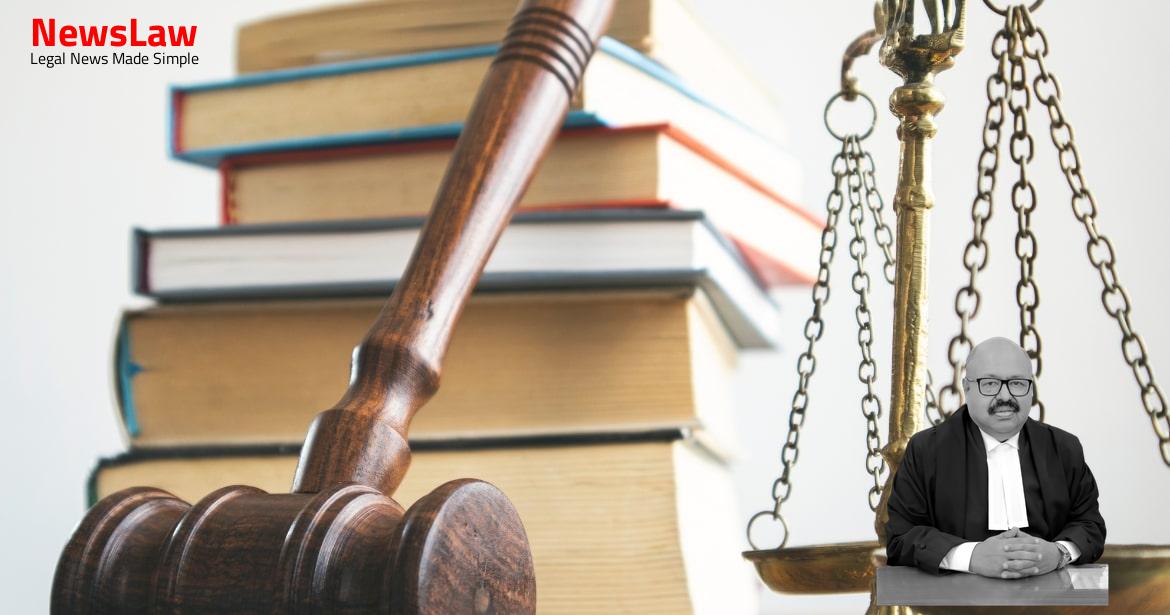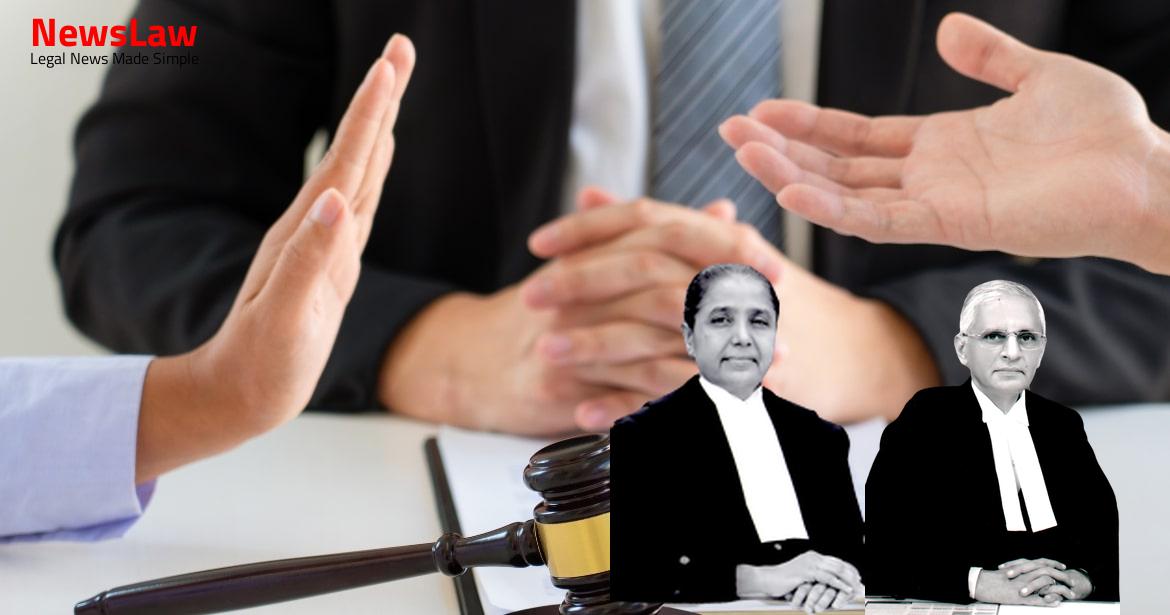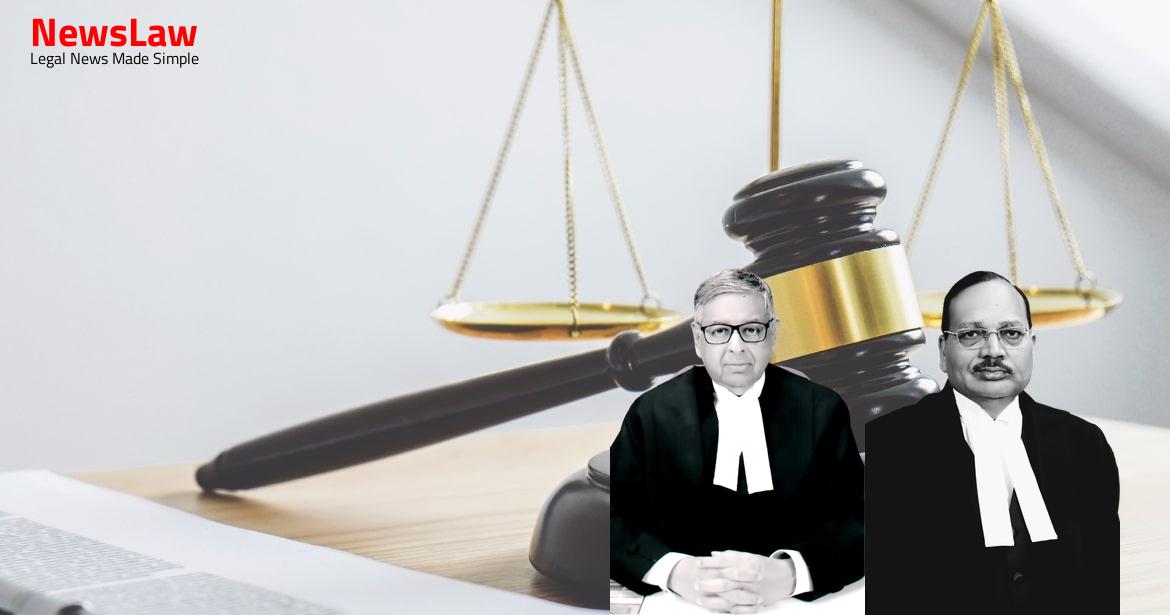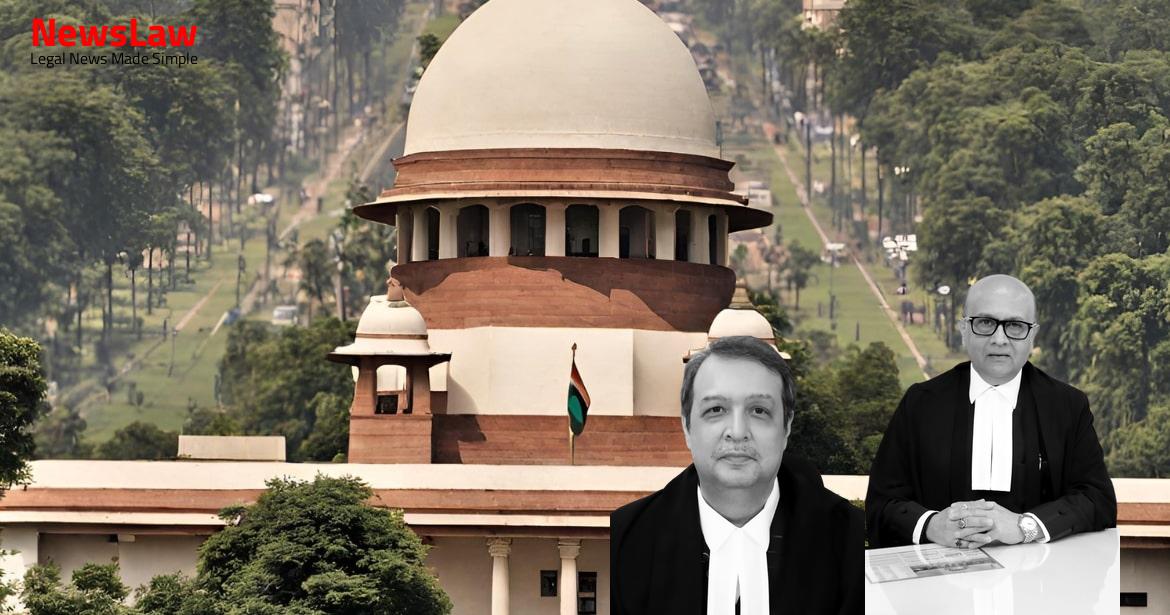Explore a detailed legal analysis of a recent homicide case focusing on the interpretation and application of circumstantial evidence. The court’s deliberation on burden of proof, motive elements, and the role of Section 106 of the Evidence Act provides valuable insights into the complexities of proving guilt beyond reasonable doubt in such cases.
Facts
- The appellant’s appeal against the conviction and sentence under Section 302 of the IPC was dismissed by the Division Bench of the High Court of Bombay.
- The appellant had been convicted and sentenced by the Additional Sessions Judge, Islampur in Sessions Case No 39 of 2003.
- The prosecution case stated that the deceased Jayashree was married to the accused around 8 or 9 years prior to the incident.
- The trial judge found the accused guilty of the offence under Section 302 IPC and sentenced him to life imprisonment.
- Accused informed PW-5 about Jayashree’s suicide by hanging.
- PW-5 called the appellant on 24 March 2003 to go to the field for harvesting.
- Accused and deceased slept in the house on the night of 23 March 2003.
- PW-5 reported the death to Kokrud Police Station and informed PW-4 about it.
- The case was committed to the Sessions Judge with two issues.
- Crime was registered under Section 302 IPC.
- Charge-sheet was filed before the Magistrate and charge was framed under Section 302 IPC.
- Prosecution alleges appellant abused and beat deceased for money.
- PW-5 informed PW-4 and went to Panumbre village to inform deceased’s mother and relatives.
- Appellant pleaded not guilty.
- Ad No. 13/2003 was initially registered for probable cause of death as asphyxia due to strangulation.
- PW-3 is the deceased’s mother and PW-5 is the appellant’s brother.
Also Read: Presumption of Genuine Endorsements in Cheque Case
Arguments
- Case rests entirely on circumstantial evidence.
- Conviction cannot be based solely on suspicion.
- Counsel relies on judgment in G. Parshwanath v. State of Karnataka.
- Prosecution failed to establish that death was homicidal.
- Evidence of Dr. Kishor Patki is inconsistent with homicidal death theory.
- Conviction in circumstantial evidence case requires proof beyond reasonable doubt.
- The trial court and the High Court rightly relied on the judgment in State of Rajasthan v. Kashi Ram for convicting the accused
- In cases of circumstantial evidence, motive plays a crucial role, which the prosecution failed to prove in this case, as per the judgment in Babu v. State of Kerala
- When two views are possible, one leaning towards acquittal and another towards conviction, the benefit should be given to the accused, as per the judgment in Devi Lal v. State of Rajasthan
- No interference is warranted in the concurrent findings of the trial court and the High Court, as per the judgment in Eswarappa alias Doopada Eswarappa v. State of Karnataka
- The burden of the accused under Section 106 of the Evidence Act does not shift unless the initial burden is discharged by the prosecution, as per the judgments in Subramaniam v. State of Tamil Nadu and Another and Gargi v. State of Haryana
Also Read: Medical Negligence and Compensation: A Landmark Decision
Analysis
- The prosecution must lead evidence that sustains a conviction or makes out a prima facie case.
- Difficulty in concluding that the husband alone was responsible for a crime.
- Motive is relevant in cases of circumstantial evidence but its absence does not weaken the prosecution’s case.
- The ‘last seen theory’ should be considered along with Section 106 of the Evidence Act.
- The burden of proof lies with the prosecution to establish guilt beyond a reasonable doubt.
- Two views are possible in cases of circumstantial evidence – guilt or innocence.
- False explanation or non-explanation can only be used as an additional circumstance, not to complete the chain of events.
- Absence of motive in cases of circumstantial evidence weighs in favor of the accused.
- Benefit of doubt goes to the accused if two possibilities are open from the evidence.
- Section 106 of the Evidence Act does not directly operate against a husband or wife staying under the same roof.
- The prosecution must exclude every possible hypothesis except the one to be proved.
- Key evidence from witnesses supporting the innocence of the appellant has been ignored by the trial court and High Court.
- The courts incorrectly applied Section 106 of the Evidence Act against the appellant.
- The medical expert did not rule out the possibility of suicide, indicating the cause of death was hanging.
- The prosecution failed to prove beyond reasonable doubt that the death was homicidal.
- Motive was a crucial element in circumstantial evidence, but the prosecution’s motive theory lacked a key link in the chain of circumstances.
- The relation between the appellant and the deceased was described as cordial, undermining the prosecution’s arguments.
- The evidence of certain witnesses, such as PW-1, was inconsistent and not reliable.
- The reliance on Section 106 of the Evidence Act was misplaced in this case.
- The trial court and High Court erred in concluding the death was homicidal based on incomplete evidence.
- The appellant’s lack of explanation under Section 313 Cr.P.C. cannot be considered conclusive evidence of guilt.
- The Post-Mortem Report indicated the cause of death as ‘asphyxia due to hanging’, supporting the possibility of suicide.
Also Read: Remand of Writ Petition for Restoration and Decision on Merits
Decision
- The appellant is acquitted of all charges.
- The appellant is directed to be released forthwith if not required in any other case.
- The appeal is allowed.
- The conviction and sentence passed by the trial court as affirmed by the High Court is set aside.
Case Title: SHIVAJI CHINTAPPA PATIL Vs. THE STATE OF MAHARASHTRA (2021 INSC 136)
Case Number: Crl.A. No.-001348-001348 / 2013



